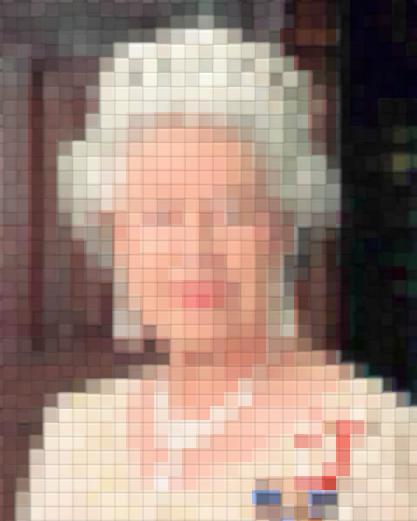Frowd et al., (2007) – The relative importance of external and internal features of facial composites
Background
This is the first study we look at from the ‘Interviewing Witnesses’ section of ‘Making a case’. As part of your OCR A2 Psychology Exam. It is further categorised into ‘Facial Reconstruction.’
Research by both Fantz and Goldstein and Chance highlight the perceptual preference for faces. This leads to increased memory of faces. Fantz showed newborns this image:

The babies all spend the longest time looking at the face on the left. Thus demonstrating an innate human preference for looking at faces.
Goldstein and Spencer showed participants unique images such as snowflakes, ink blots and faces. They found statistically significantly more faces were recalled than any of the other images.
Sinha’s Meta analyisis of stranger face reconstruction (2006) concluded with eight key points.
Firstly, try to identify this image:

The chances are, you recognised Queen Elizabeth II of England. Despite the crude pixelation of the image.
Sinah’s conclusions were:
Humans can recognise faces even if the mode of communication is poor, for example low resolution images – the more familiar the person is, the more likely it is that they will be recognised in low resolution images. Therefore, facial features of familiar people are processed as a whole rather than component parts. Sinha found that identifying person is heavily reliant upon the eyebrows and the hairline and both lighting and motion can both influence recognition.
There are specialised neurones for facial recognition and identity and expression and processed by different cognitive systems.
Pareidolia
Aim
To study and understand the relative recognisability of internal and external features of facial composites.
Design
Three laboratory experiments
Participants
Experiment One
30 members of staff and students from Stirling University
Experiment Two
48 Students from Stirling University
Experiment Three
8 members of staff and students from Computer Science and Psychology
Then, 54 participants
Procedure
Experiment One
Independent Measures
The participants were shown 10 target photographs of famous people and 40 composite images produced by various computer programs.
There was three sets of composites were used:
- A set of complete faces
- A set containing only internal features
- A set containing only external features
The participants were random assigned to one of the three composite sets and tested individually.
“They were told that they would be evaluating composites offamous faces by matching them to their celebrity targets. The target photographs,which were always complete faces, were then placed on the table in front of each person and the relevant pile of 40 composites given. Participants were asked to work through the set sequentially by placing each composite in front of a celebrity face, in their own time, but to try not to make exchanges once placed on the table. Using this procedure, the composites were thus sorted. The order of presentation wasrandomised across the set to mix the composites from the different systems (i.e. onlyone block was used). The presentation order of targets was also randomised for each person.” – (Frowd et al., 2007)
All the faces were clean shaven and faces were glasses were avoided.
Experiment Two
“This experiment used a photo array to compare the quality of the external and internal composite features of Experiment 1. While more difficult to set up than a sorting task,as a number of distracter faces (foils) must be located for each target face, the photoarray task (or line-up) may function more as a measure of identification, such as a police line-up, given that the arrays contain foils and targets deliberately selected to be similar to each other. ” (Frowd et al., 2007)
Experiment Three
The results of both experiment one and two suggest that recall of faces focuses mainly on the external features. The problem with both sets of results was that causation cannot be inferred.
Results
Experiment One
Both the complete composites and external composites were sorted with similar results with around 35% correct. Whereas the internal composites were around 19.5% correct.
Experiment Two
External composites 42% correct
Internal 24% correct
Experiment Three
Both complete faces and external faces were matched with the same level of accuracy, which was significantly greater than the internal faces.
Conclusions
The results of this study suggest that there is something about the internal features of a face which impair cognitive reconstruction of the face, even when a face is familiar.
Evaluation
+ Laboratory experiments are high in controls and therefore highly valid.
– Ecological validity – the study is not ecologically valid in terms of witnesses identifying criminals, when a person has to identify a criminal they have only seen them once, this was not accounted for in the study.
– Ethnocentrism, the study was only focused on volunteers from Stirling University.
Audio Podcast
References
Further Reading
OCR A2 Psychology Student Unit Guide: Unit G543: Forensic Psychology (Student Unit Guides)